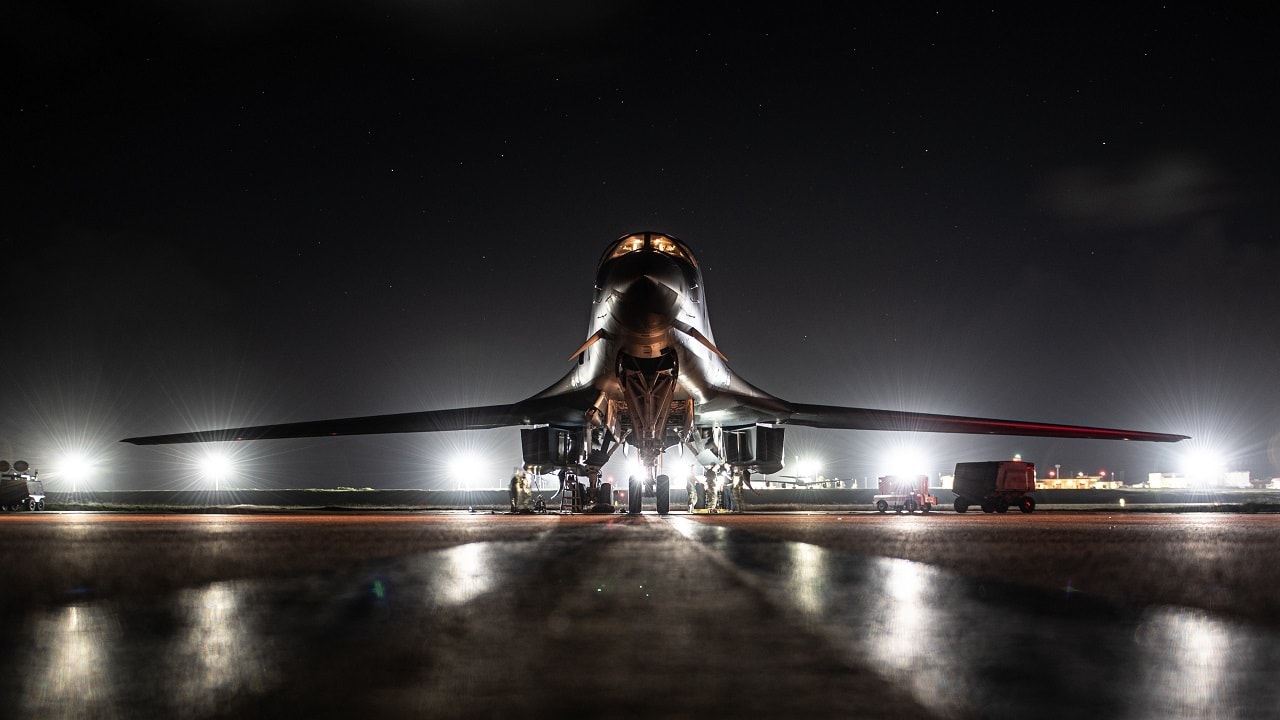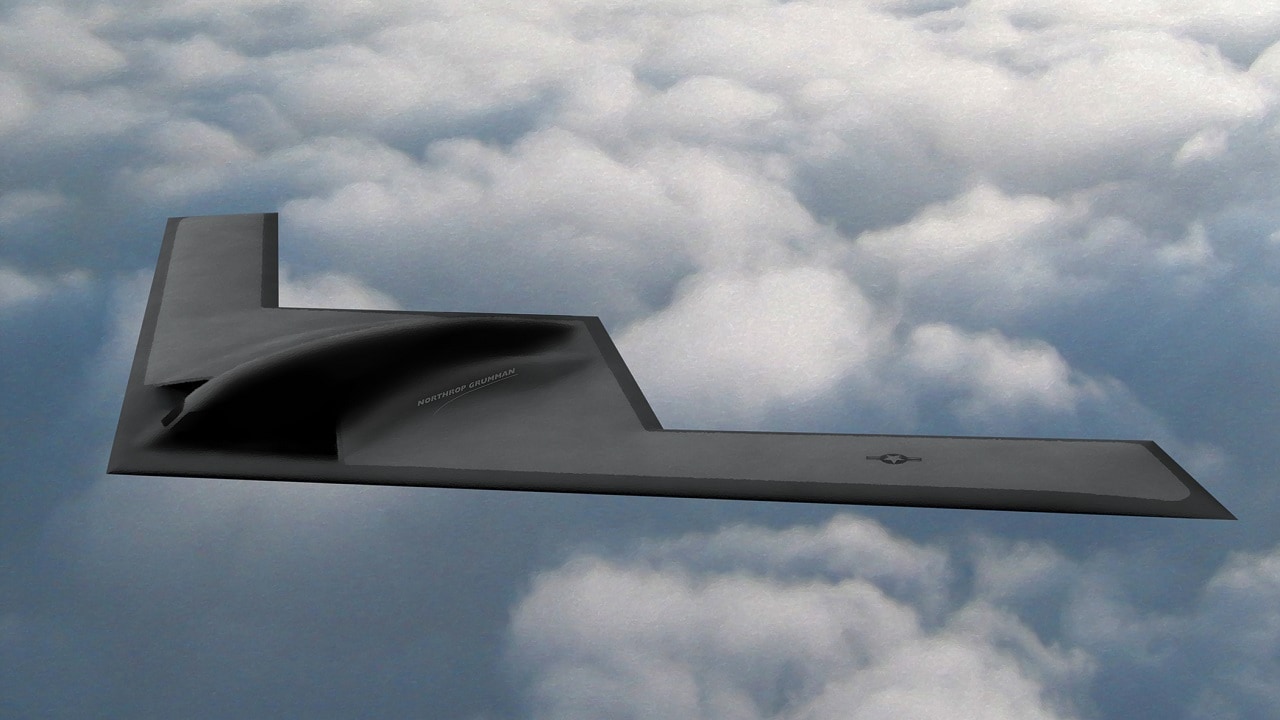What You Need to Know: The U.S. Air Force faces a growing bomber deficit as B-1B and B-2 aircraft near retirement. The B-21 Raider, planned at a fleet size of 100, offers advanced capabilities, including stealth, networking, and unmanned system control.
-However, calls to increase production to 200 bombers could address the gap and lower per-unit costs, currently estimated at $700 million each.
-Expanding the fleet would enhance readiness against emerging threats like China’s H-20 and Russia’s PAK DA bombers.
-Scaling production might require trade-offs, but ensuring sufficient numbers of B-21s could secure U.S. strategic air power for decades to come.
Should the US Air Force Double Its B-21 Raider Bomber Fleet?
Should the Pentagon and the United States Air Force decide to flex and “scale” its B-21 Raider bomber effort? Would that lower the $700 million per-plane costs and meet or start to meet the services’ long-standing “bomber deficit?”
Without a steady stream of arriving B-21s, the Air Force’s bomber deficit may become even more concerning as it continues to grow in a dangerous direction given the threat environment and requirement to progressively retire B1-B and B-2 bombers.
These impactful legacy bomber programs continue to receive life-extension technologies, upgrades, and improvements. Yet, Air Force leaders state clear intentions that the B-21s must arrive at the fastest possible pace. The Air Force plan is to incrementally retire B1-Bs and B-2s in coming years as B-21s emerge, yet how fast will this happen?
Will the Air Force’s bomber deficit get worse or even rise to dangerous levels? Years ago, the service wrote a “bomber vector” analysis designed to mitigate the service’s bomber shortage, a text which called for extensive upgrades and life extension programs for the B-2 and B1-B while also championing the anticipated arrival of sufficient numbers of B-21s.
In response, the Air Force has massively upgraded its small fleet of B-2s with a series of new sensors, command and control technologies, weapons systems, and stealth-enhancing properties. The B-2 may be capable of flying with great success and relevance well into the 2040s despite already being 30 years old.
However, the B-2 fleet suffers a “mass” problem as there is only a fleet of 20 aircraft due to cutting efforts short years ago.
The B1-B, while a successful workhorse in Iraq and Afghanistan, is different. While the B1-B underwent upgrades with a new bomb-rack unit, new computing, and the ability to carry hypersonic weapons, it may retire more quickly.
200 B-21 Raider Bombers for the U.S. Air Force?
One idea may be to return to fleet-size discussions that circulated at the Pentagon several years ago when many senior Air Force leaders and weapons developers called for as many as 200 B-21 bombers. Could this address the deficit? There are two colliding factors, given that the fleet size is currently established at 100 B-21s and the price has soared to $700 million per plane. A significant essay from Northrop in June of 2024 cites consistent numbers, stating the average price-per-unit is expected to be $550 million in 2010 dollars.
There is little question that a move to 200 B-21s would bring massive new expenses to the Pentagon. It might achieve the dual-pronged goal of addressing the Air Force bomber deficit while substantially lessening the cost-per-plane. A larger fleet size would enable Northrop to “flex” its industrial capacity, build more bombers sooner, and potentially considerably lower the cost of B-21s.

B-1B Lancer Bomber. Image Credit: U.S. Air Force.
Considering this will likely force difficult decisions, and some concerning potential trade-offs may prove necessary given the growing threat environment. China’s H-20, for instance, as stated in Pentagon reports, is believed to operate with a significant range and reach, likely to increase its capacity to hold US targets at risk. Russia’s PAK DA bomber also appears to be generating attention as a possible area of concern.
These new Russian and Chinese bombers‘ precise technological components may not yet be fully known. However, should they in any way challenge the B-21s in terms of stealth, sensing, weapons integration, computing, and range, then the question of “mass” becomes more critical. In any large-scale engagement, the US would need the ability to mass its high-tech fleet of B-21 bombers.
Bomber Concepts of Operation and B-21 Raider
This is also significant given that the mission of the B-21 Raider bomber has continued to evolve and take on new Concepts of Operation. The aircraft will not only function as a flying command and control center or “node” in the sky for force networking, but it will also control groups of unmanned systems from safe stand-off regions.

B-21. Image Credit: Northrop Grumman
About the Author: Kris Osborn
Kris Osborn is the Military Technology Editor of 19FortyFive and President of Warrior Maven – Center for Military Modernization. Osborn previously served at the Pentagon as a highly qualified expert in the Office of the Assistant Secretary of the Army—Acquisition, Logistics & Technology. Osborn has also worked as an anchor and on-air military specialist at national TV networks. He has appeared as a guest military expert on Fox News, MSNBC, The Military Channel, and The History Channel. He also has a Masters Degree in Comparative Literature from Columbia University.

